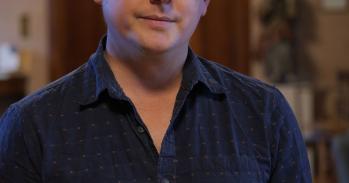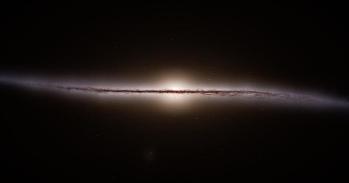
A team of astronomers led by Cambridge University have taken pictures of the stars that are sharper than anything produced by the Hubble telescope, at 50 thousandths of the cost.
A team of astronomers led by Cambridge University have taken pictures of the stars that are sharper than anything produced by the Hubble telescope, at 50 thousandths of the cost.
To produce images sharper than Hubble from the ground is a remarkable achievement by anyone's standards.
A team of astronomers led by Cambridge University have taken pictures of the stars that are sharper than anything produced by the Hubble telescope, at 50 thousandths of the cost.
The researchers, from the University of Cambridge and the California Institute of Technology (Caltech), used a technique called "Lucky Imaging" to take the most detailed pictures of stars and nebulae ever produced - using a camera based on the ground.
Images from ground-based telescopes are usually blurred by the Earth's atmosphere - the same effect that makes the stars appear to twinkle when we look at them with the naked eye.
The Cambridge/Caltech team, however, surpassed the quality of images taken from space by using a high-speed camera to take numerous images of the same stars at a rate of 20 frames per second. Because of fluctuations in the atmosphere, some of these were less smeared than others. The team then used computer software to choose the best images, and these were combined to create pictures far sharper than anything that has been taken from space.
Dr Craig Mackay, from the Institute of Astronomy at the University of Cambridge, who led the research, said: "To produce images sharper than Hubble from the ground is a remarkable achievement by anyone's standards.
"These are the sharpest images ever taken either from the ground or from space and yet we are essentially using 'Blue Peter' technology. Amateur Lucky Imaging is popular because the technique is so cheap and effective. The low cost means that we could apply the process to telescopes all over the world."
The Lucky Imaging technique was first mooted in the late 1970s and has enabled the discovery of many multiple star systems which are too close together and too faint to find with any standard telescope.
Their pictures of the globular star cluster M13, which is 25,000 light years away, are so detailed that they were able to find stars as little as one light day apart. The images of the Cat's Eye Nebula (pictured), were so fine that they could pick out details separated by only a few light hours.
The work was carried out on Palomar Mountain, California, using the 200-inch telescope at the Palomar Observatory in conjunction with an adaptive optics system. Like all other ground-based telescopes, the images this produces are typically 10 times less detailed than those produced by Hubble. Using the Lucky Camera, however, it was possible to obtain images that are twice as sharp as those of the space telescope.
The technique could now be used to improve much larger telescopes such as those at the European Southern Observatory in Chile, or the Keck telescopes in the top of Mauna Kea in Hawaii. This has the potential to produce even sharper images.
"The images space telescopes produce are of extremely high quality but they are limited to the size of the telescope," Dr Mackay added. "Our techniques can do very well when the telescope is bigger than Hubble and has intrinsically better resolution."
This work is licensed under a Creative Commons Licence. If you use this content on your site please link back to this page.





